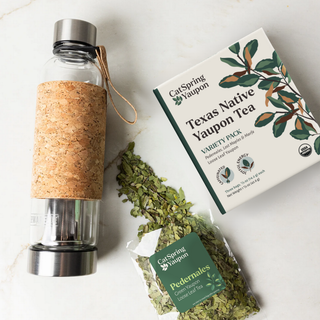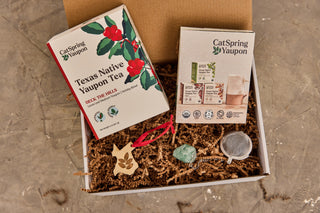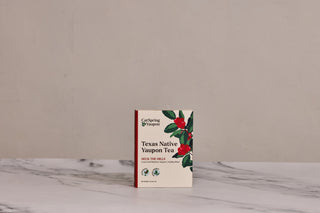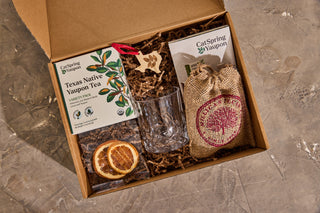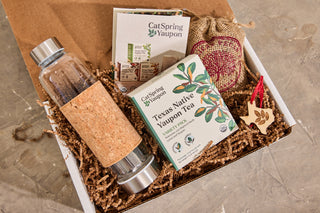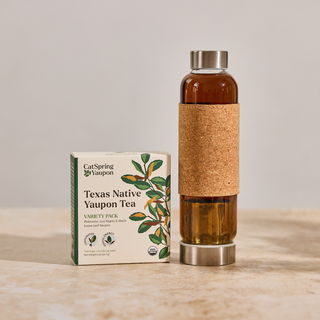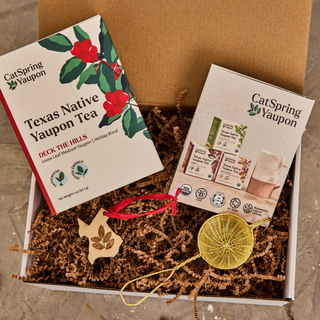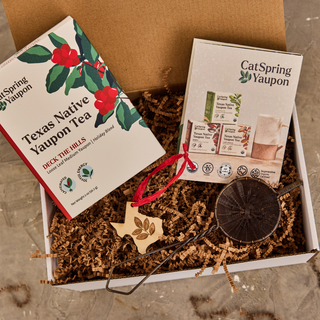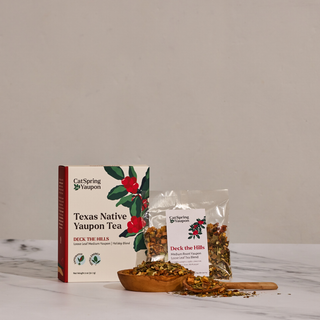Yaupon is new to the modern beverage landscape yet carries a rich history. Traditional tea has been served worldwide for centuries and even the close cousin of yaupon, yerba mate, is popular in South American countries and has spread across the globe. Along the way, yaupon got lost in the dark history of America and indigenous people groups. That’s why we’re glad to revitalize this lost Native American treasure and share it once more with the larger world.
NATIVE AMERICAN CULTURE
Centuries ago, yaupon was common amongst Native American tribes, with the Cherokee calling yaupon the beloved tree. Early records show that Native Americans across the South and in the Northwest of Mexico consumed yaupon as early as 750 AD. For Native Americans, yaupon had multiple purposes including use as a medicinal tea and a sign of status. It was used by tribes as part of an infusion with other plants to create an emetic black drink for ritual ceremonies to purge toxins from the body and prepare for battle. Amongst the Muscogulges, known more commonly as the Creek people, yaupon was associated with a sky deity named Yahola and consumption was limited to adult males of high social status. Native American tribes even traded for yaupon, with traces of it found as far north as the Native American mound city of Cahokia, found near the Missouri and Mississippi rivers.
EARLY SETTLERS

Native Americans introduced yaupon to early colonizers. In 16th century Florida, Timucua Indians taught Spanish settlers who named it te del indio or cacina. It was an instant hit. In 1615, a Spanish priest reported that “there is not Spaniard or Indian who does not drink it every day in the morning or evening”. Further up the coast, 18th century English settlers in the Carolinas discovered yaupon. In South Carolina it became known as cassina and as yaupon in North Carolina. When they traded it back to Europe, they marketed it as Carolina tea in England and Appalachina in France.
DISAPPEARANCE
All international trading halted in the 19th century. The reason is unclear, but the most prevalent theory is tea conspiracy. Reports associated the emetic properties of Native American drinks from purification rituals with the yaupon. William Aiton, an influential botanist and “Gardener to His Majesty”, dubbed yaupon with the scientific name Ilex vomitoria. Thus, he cemented the association between yaupon and vomiting. Though contemporary reports disproved these claims, the damage was done. Though Aiton’s individual motivations are unclear, the East India Company, with a tight grip on British tea trade, may have benefitted from the disappearance of yaupon as a competitor.
And domestically, the tradition of yaupon was largely erased due to the eradication and forced relocation of the original consumers: indigenous people groups. Yaupon does not grow in Oklahoma and with the move to the reservation, many tribes lost (along with their homes) access to their beloved tree.
Yaupon wasn’t gone for good though. Though largely diminished in numbers, Native Americans continued to consume yaupon, and it was even used during the Civil War as a coffee substitute. But it never rose back to prominence, in part due to its association with the hardships of the war and associations as a lower class beverage. In recent years, it is a common decorative plant and is even considered a weed in the South because it grows everywhere. You may even have some in your yard!
RETURN

At CatSpring Yaupon, we share this incredible, tenacious American treasure with the world. The Native Americans and early settlers recognized it as a delicious beverage and now you can as well. Try all our varieties to experience the wide range of flavors we are just beginning to uncover in this ancient tradition.
Interested in even more history? Check out this BBC article or this incredibly thorough Cambridge Press article.
